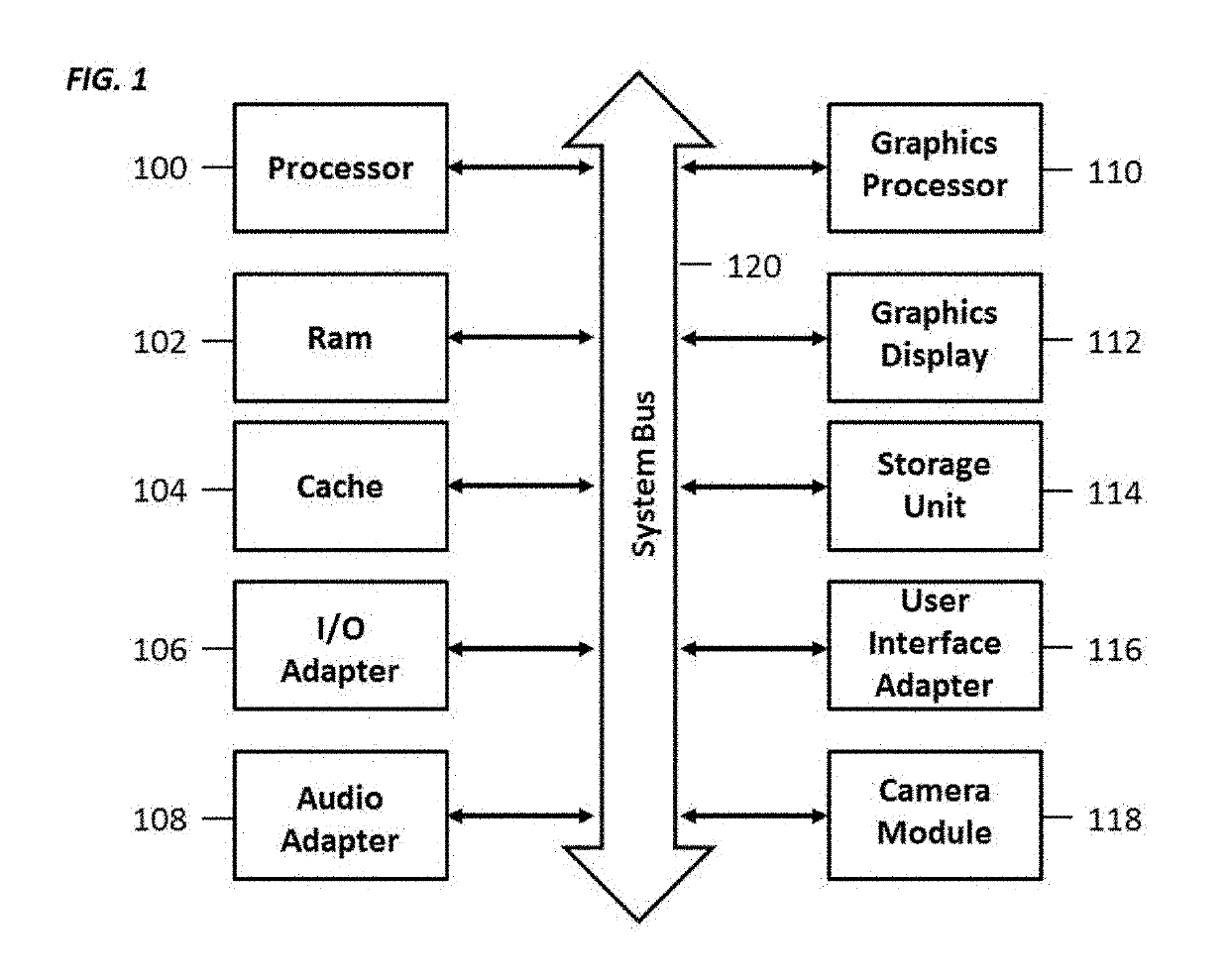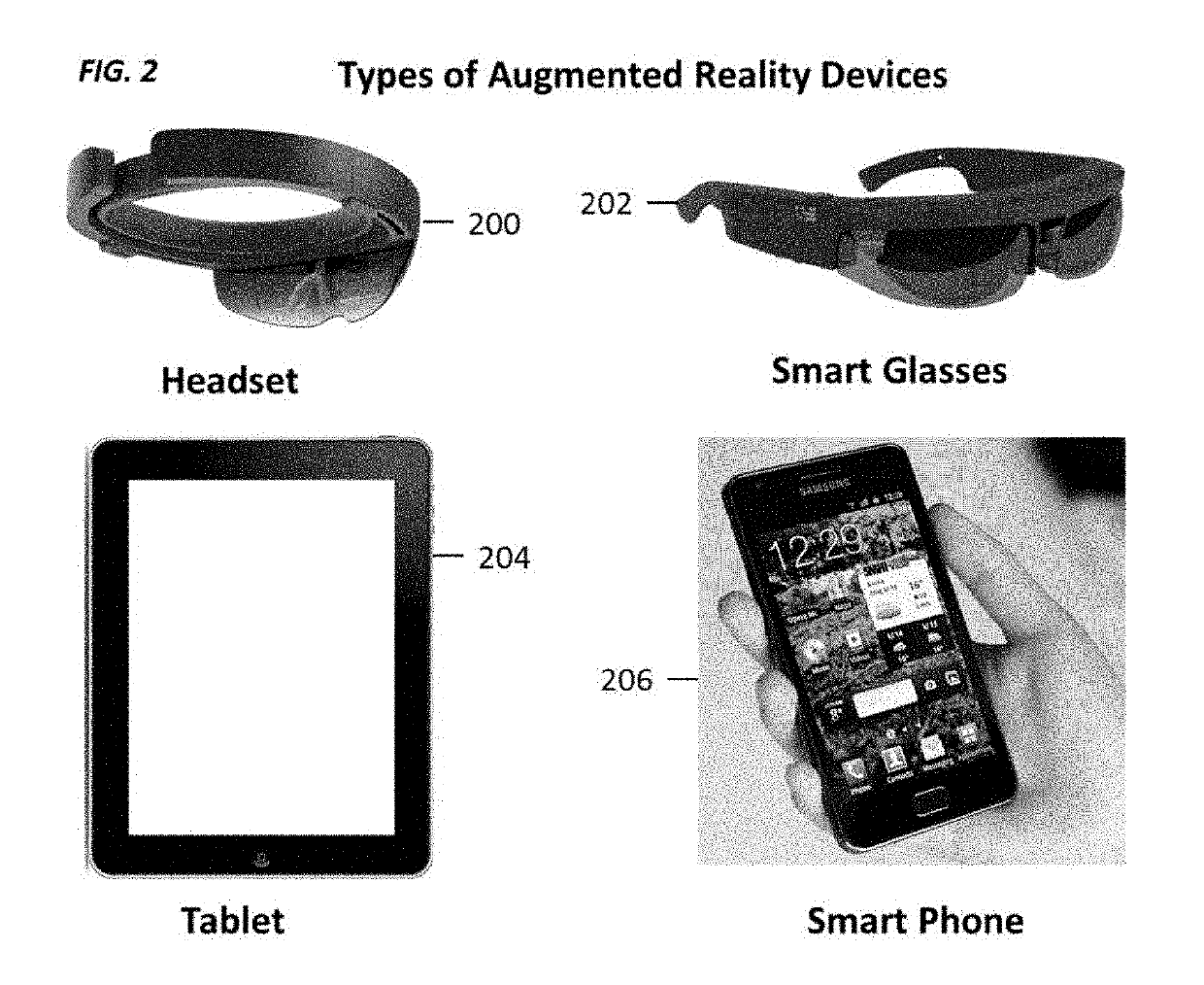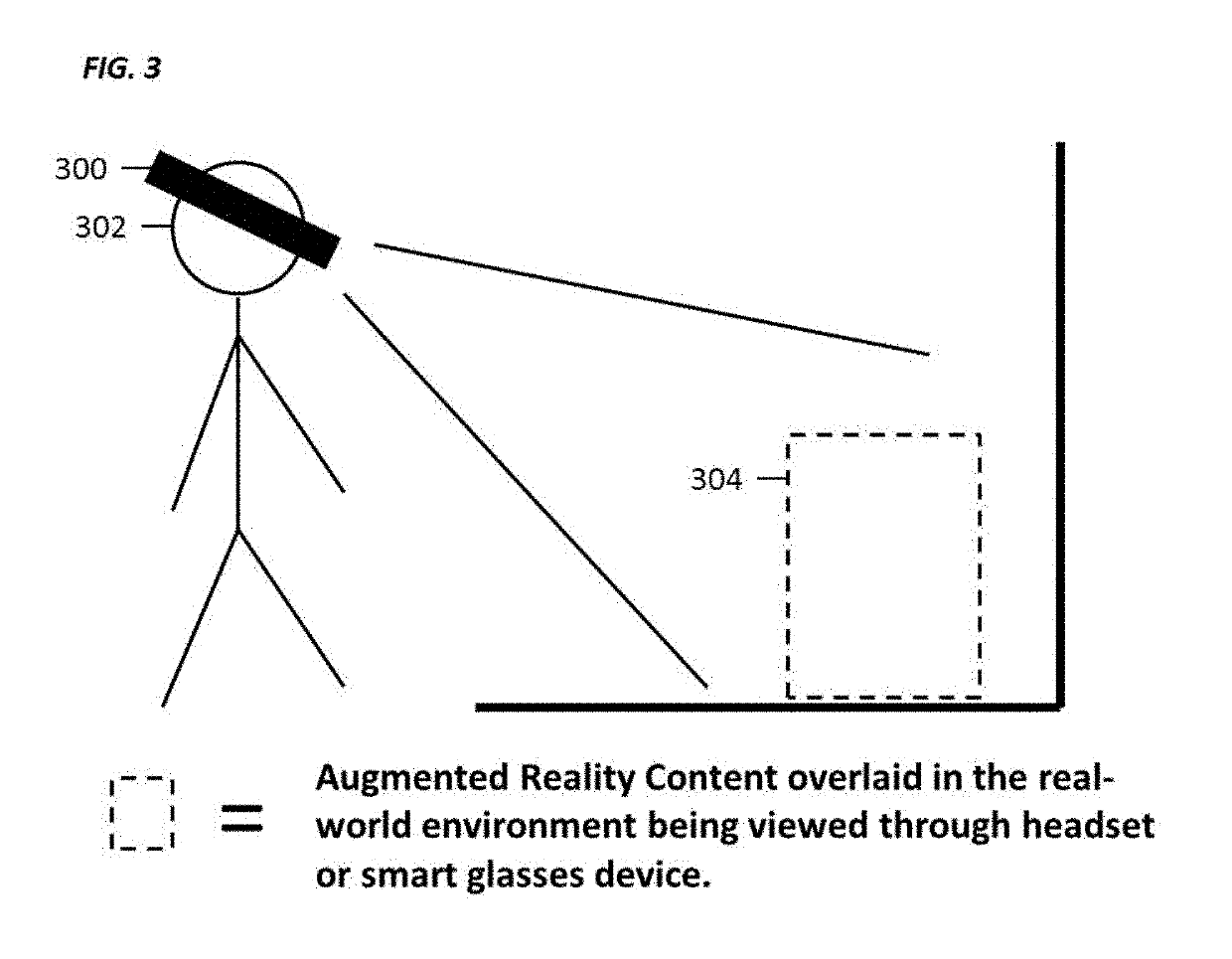Real-time spatial authoring in augmented reality using additive and subtractive modeling
a technology of augmented reality, applied in the field of real-time spatial authoring in augmented reality using additive and subtractive modeling, can solve the problems of limiting the user's ability to perform any spatial authoring on augmented reality content in their real world environment, static layout, user's inability to modify the constructed layout, etc., to speed up the design process
- Summary
- Abstract
- Description
- Claims
- Application Information
AI Technical Summary
Benefits of technology
Problems solved by technology
Method used
Image
Examples
Embodiment Construction
[0026]FIGS. 1 through 18, discussed below are by way of illustration only and should not limit the scope of the disclosure. The system described in FIG. 1 is not limited to the devices mentioned in FIG. 2 and may represent any device that comprises of one or more of the components in FIG. 1. The systems and methods described herein may be implemented on any system, device, or apparatus comprising one or more of the components in FIG. 1. FIGS. 3 and 4 may represent typical augmented reality use cases for the devices in FIG. 2 but are not limited to those devices shown in FIGS. 3 and 4. FIG. 5 illustrates a known technique for spatially authoring content in augmented reality. In step 1 of FIG. 5, using a tablet-like augmented reality device, a user may map out a room that is shown as a wireframe cube 500 that the user is standing in. The user may then create another room represented as a dotted wireframe cube 502 that may touch the initial wireframe cube 500. At this point, the dotted...
PUM
 Login to View More
Login to View More Abstract
Description
Claims
Application Information
 Login to View More
Login to View More - R&D
- Intellectual Property
- Life Sciences
- Materials
- Tech Scout
- Unparalleled Data Quality
- Higher Quality Content
- 60% Fewer Hallucinations
Browse by: Latest US Patents, China's latest patents, Technical Efficacy Thesaurus, Application Domain, Technology Topic, Popular Technical Reports.
© 2025 PatSnap. All rights reserved.Legal|Privacy policy|Modern Slavery Act Transparency Statement|Sitemap|About US| Contact US: help@patsnap.com



